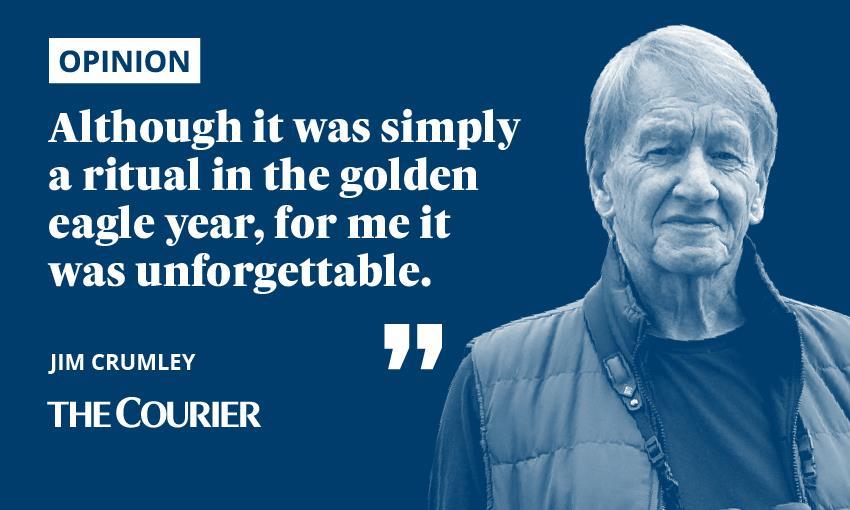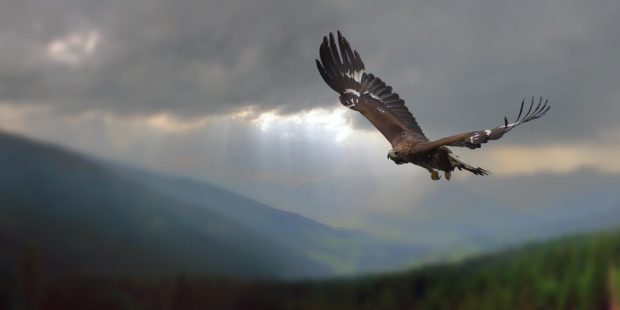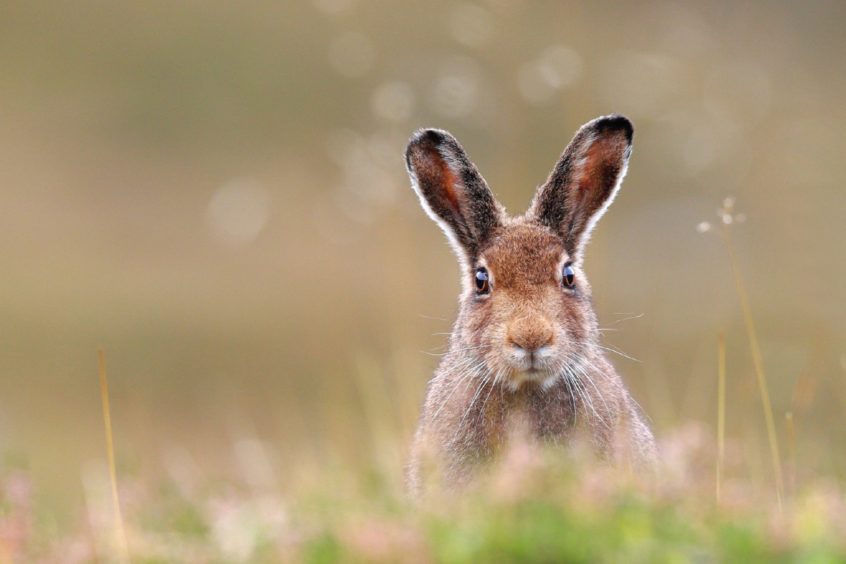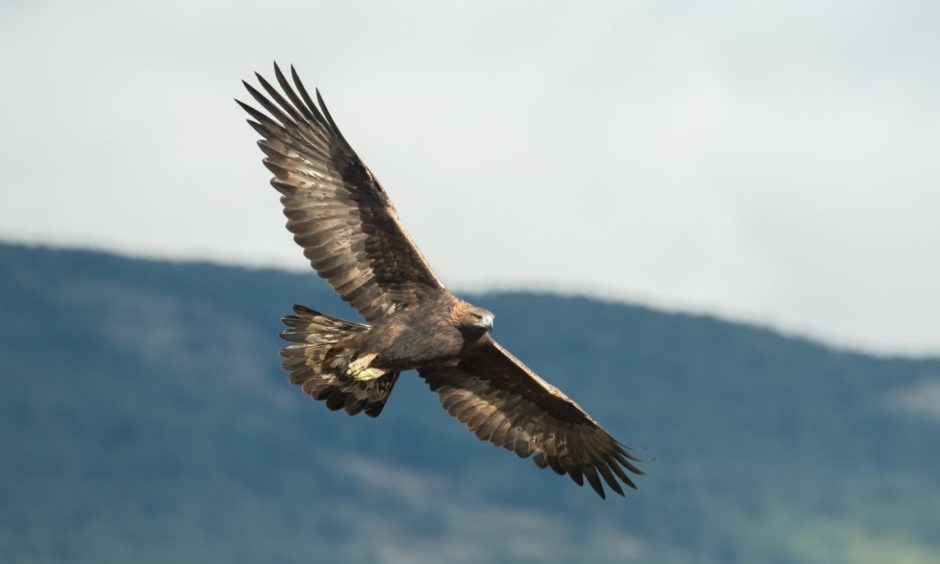She came in low and slow and out of the north-west. She was not hunting, at least I don’t think she was. It’s not always easy to tell when she flies as slowly as that.
She often hunts within a few feet of the ground, a phenomenon of flight I don’t pretend to understand for with golden eagles it is so slow, and at times her wingtips almost touch the wingtips of her shadow.
It seems to me contravene every principle of flight, which in turn simply demonstrates how much a golden eagle knows about the principles of flight that I don’t.
But usually when she hunts, she flies slower than she did when she came in in from the northwest.
Her head was down and her wings were held wide and motionless. I thought she flew more lazily, less intensely than when she hunts. But I was guessing again.

Early July is often when eaglets take their first flights in this glen, which I have known for 40 years.
In those 40, I have only seen it once, and as a spectacle it was something of an anticlimax.
It was steeply and slightly chaotically downhill, ending in a graceless and gruesome landing on steep hillside grass – about 200 unconvincing yards.
But it was a start, it was flight, and although it was simply a ritual in the golden eagle year, for me it was unforgettable, its memory indelible, the more so since I saw it from above.
Golden eagle casting silken shadows
It represented the first syllable in a life that would – in time, in time – be characterised by supremely articulate flight, such as this mature female homing in on the rocks of the watershed where I sat high above the eagle glen and its eyrie buttress.
The sun was full on her and of course I looked for her shadow.
I have always loved the ripple of an eagle shadow over rock and grass and just behind her or just ahead of her, just uphill or just downhill.
That early July day it was almost directly beneath her for the sun was at its height, a
hard glare that lit her from stem to stern and wingtip to wingtip and ignited that golden blaze at her head and nape.
Her shadow looked like black silk as it crossed the watershed. Her tail rocked gently,
millimetrically precise.
She was not 200 yards away when she lifted suddenly. In good binoculars and so brilliantly lit, it was (if you will forgive the unornithological language) godlike.
At once, there was distance between her and her shadow. A hundred feet up, she flipped on to one wingtip and charged the ground, only to whip up again in a tight curve.
The tall grass beneath her rocked in her wake. From the top of her climb she half-closed her wings and surged forward at speed.
In that guise she crossed the headwall and her shadow vanished into thin mountain air.
I lost her eventually against the background confusion of dark rocks, scree and birch wood.
Hares survive to sit and stare
At once, there was the sound of a scuffle somewhere out on the boggy watershed terrain behind me.
I turned slowly, and somewhere about the point where the eagle had dived down and climbed again, there was a mountain hare, sitting tall and with ears tall too, staring after her.
Then a second, smaller hare rose to sit beside it.
I had questions.
How long were the hares hunkered there? How long had they been aware of the eagle before I was?
They have the advantage of almost 360-degrees vision thanks to protuberant eyes set high on the sides of their heads.
Are they so attuned to every twitch of their environment that they can choose in a moment between life-or-death options – a chancy dash over open ground before the rim of the headwall offered steep, tree-and-rock-strewn cover that would surely thwart the eagle, but only if they got there first?
It’s a big “if”. A hare can run at 40 miles per hour, a golden eagle in a shallow dive at well over twice that.
It’s a tricky call, trying to bluff a golden eagle.
All in the golden eagle game?
More questions: Was the eagle not hungry and just making mischief?
Is there something in the eagle’s prey drive which, like the wolf’s, is only stimulated when the prey is on the move?
And does the mountain hare know that? Surely the answer to that is yes, given how long the species have evolved together and the sophisticated nature of the relationship between the two.
I turned back to find the eagle, but she would not be found. So I turned again to the hares, but they had also gone.
In half a minute of looking the wrong way – twice – I had lost both eagle and
hares.
I have been told many times that the amount of wildlife I see is impressive. I have often been described as a wildlife expert (I am not).
Here, if I ever needed reminding (I don’t), was all the evidence I could wish for of my limitations in such acutely attuned company as this.


